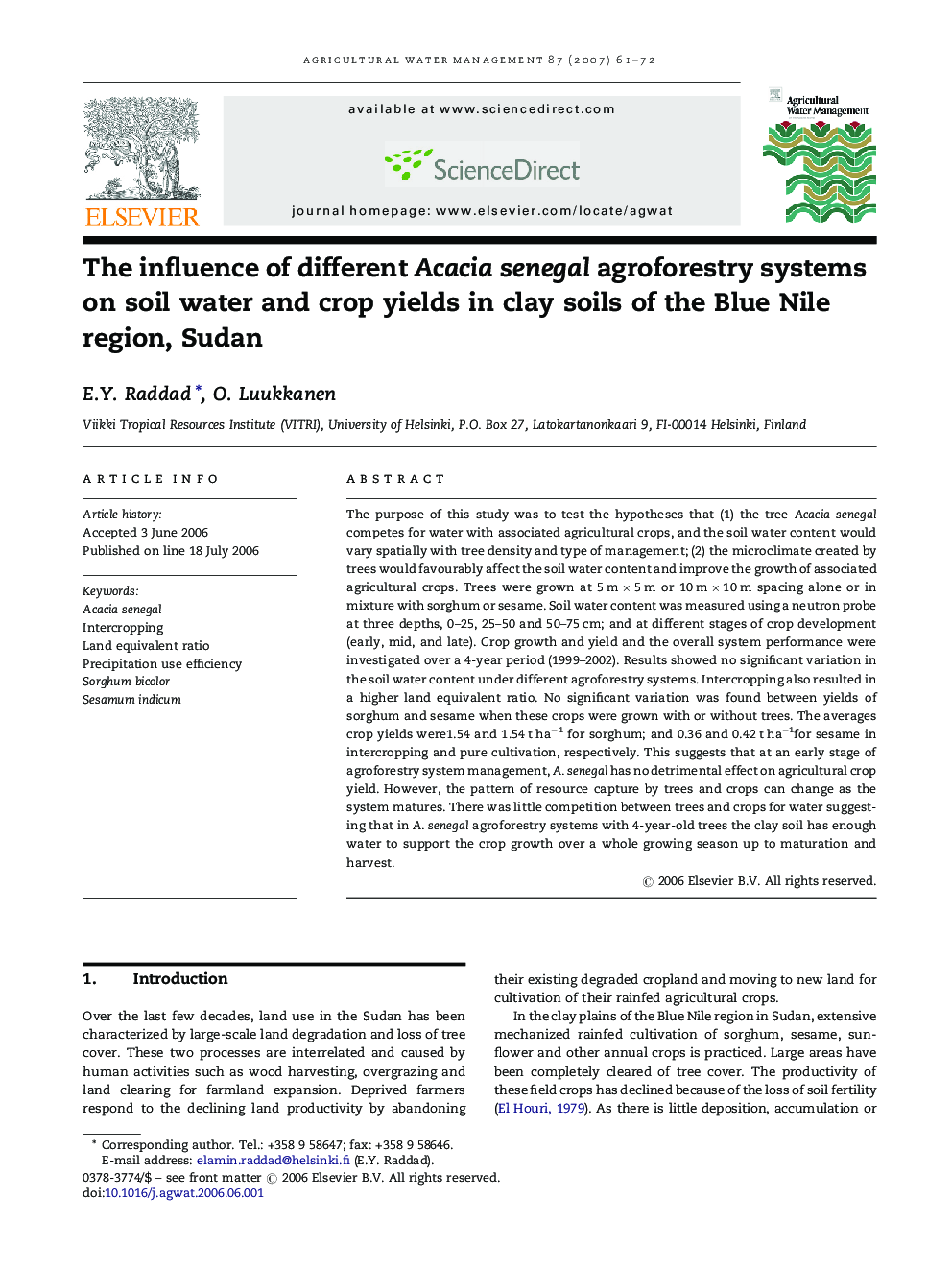| Article ID | Journal | Published Year | Pages | File Type |
|---|---|---|---|---|
| 4480572 | Agricultural Water Management | 2007 | 12 Pages |
The purpose of this study was to test the hypotheses that (1) the tree Acacia senegal competes for water with associated agricultural crops, and the soil water content would vary spatially with tree density and type of management; (2) the microclimate created by trees would favourably affect the soil water content and improve the growth of associated agricultural crops. Trees were grown at 5 m × 5 m or 10 m × 10 m spacing alone or in mixture with sorghum or sesame. Soil water content was measured using a neutron probe at three depths, 0–25, 25–50 and 50–75 cm; and at different stages of crop development (early, mid, and late). Crop growth and yield and the overall system performance were investigated over a 4-year period (1999–2002). Results showed no significant variation in the soil water content under different agroforestry systems. Intercropping also resulted in a higher land equivalent ratio. No significant variation was found between yields of sorghum and sesame when these crops were grown with or without trees. The averages crop yields were1.54 and 1.54 t ha−1 for sorghum; and 0.36 and 0.42 t ha−1for sesame in intercropping and pure cultivation, respectively. This suggests that at an early stage of agroforestry system management, A. senegal has no detrimental effect on agricultural crop yield. However, the pattern of resource capture by trees and crops can change as the system matures. There was little competition between trees and crops for water suggesting that in A. senegal agroforestry systems with 4-year-old trees the clay soil has enough water to support the crop growth over a whole growing season up to maturation and harvest.
